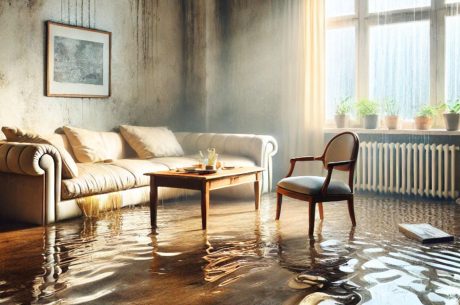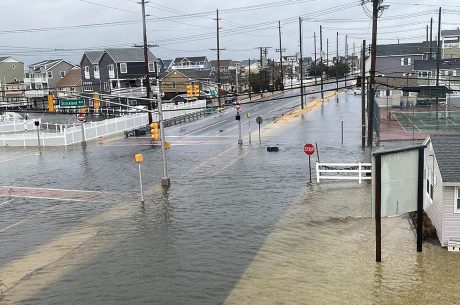PuroClean Emergency Recovery Services in New Jersey – (877) 750-7876
Water damage is a common and often expensive issue that many homeowners and property owners face. Understanding whether your home insurance covers water damage is crucial to ensure you are adequately protected in case of unexpected water-related incidents. In this comprehensive guide, we will explore the types of water damage covered by home insurance, what is not covered, and the essential steps to take when dealing with water damage claims.
We will explore the types of water damage covered by home insurance
Types of Water Damage
Before delving into home insurance coverage, it’s essential to understand the different types of water damage and their classifications:
Category 1 (“Clean” Water Damage)
Category 1 water damage involves “clean” water from sources such as broken pipes, overflowing sinks, or rainwater. This category poses minimal health risks if addressed within 48 hours. However, untreated Category 1 damage can escalate to Category 2.
Examples of Category 1 water damage include:
- Broken water supply lines
- Leaking or overflowing sinks and bathtubs
- Malfunctioning appliances (e.g., dishwashers, washing machines)
- Rainwater entering through a roof leak
Category 2 (“Gray” Water Damage)
Category 2 water damage, also known as “gray” water damage, contains contaminants that may cause illness or discomfort if ingested or exposed to the skin. Sources include washing machines, dishwashers, and toilet bowls with urine but no feces.
Examples of Category 2 water damage include:
- Washing machine overflows with detergent or fabric softener
- Dishwasher leaks with food particles or grease
- Toilet bowl overflows containing urine
- Standing water in a flooded basement
Category 3 (“Black” Water Damage)
Category 3 water damage, or “black” water damage, is highly contaminated and can lead to severe illness or death if ingested or exposed to the skin. Sources include sewage backups, flooding from rivers or streams, and water contaminated with chemicals or hazardous materials.
Examples of Category 3 water damage include:
- Sewage backups
- Flooding from nearby rivers or streams
- Standing water contaminated with chemicals or hazardous substances
- Water damage involving toilet bowls with feces, regardless of urine presence
Understanding these water damage categories is crucial when assessing the potential health risks and necessary precautions during cleanup and restoration.
Types of Water Damage Covered by Insurance
Home insurance typically covers water damage that is deemed “sudden and accidental.” It’s important to differentiate between sudden damage and gradual damage, as gradual damage, such as a slow kitchen sink leak, is typically not covered. Here are the types of water damage usually covered by insurance:
1. Burst Pipes
Insurance generally covers damage caused by burst pipes. This includes instances like a frozen pipe that bursts, as long as you have not neglected proper heating of the property.
2. Accidental Leaks
Water damage resulting from accidental leaks, such as those from malfunctioning appliances (e.g., a broken washing machine or dishwasher), is typically covered by insurance.
3. Water Damage After a Fire
If your property suffers water damage due to water used to extinguish a fire (e.g., from sprinkler systems or fire department hoses), this is generally covered by insurance.
4. Water Damage from Storms
Home insurance typically covers water damage caused by storms, such as heavy rain or hail. However, it’s essential to review your policy’s specific terms and limits.
5. Water Damage from Roof Leaks
Water damage resulting from a roof leak, whether due to a storm or a fallen tree, is usually covered. It’s essential to address this damage promptly to prevent further issues.
Types of Water Damage Not Covered by Insurance
While home insurance covers various types of water damage, several situations are typically excluded from coverage. Here are some common scenarios not covered by standard insurance policies:
1. Flood Damage
Standard home insurance policies do not cover any form of flood damage. To protect your property from flooding, it is advisable to purchase flood insurance through the National Flood Insurance Program (NFIP).
2. Neglect and Lack of Maintenance
Damage resulting from poor maintenance or neglect, such as damage caused by a neglected leaky toilet, is generally not covered by insurance. Regular maintenance is crucial to prevent such issues.
3. Sewer Backups
Damage caused by water backing up into your property through outside sewers or drains is typically not covered by standard home insurance.
4. Water Damage from Seepage or Leaks Through a Foundation
Water damage resulting from seepage or leaks through a property’s foundation is often excluded from coverage.
5. Water Damage from Earthquakes
Similar to flood damage, insurance policies typically do not cover water damage caused by earthquakes. Property owners in earthquake-prone areas may need to purchase separate earthquake insurance.
The Claims Process
If you encounter water damage in your home, it’s essential to follow the correct steps when filing an insurance claim:
1. Contact Your Insurer
Immediately contact your insurance company to report the water damage. Discuss the specifics of your policy and determine the extent of your coverage.
2. Document the Damage
Document the damage extensively. Take photographs and videos, as visual evidence will be crucial during the claims process. Provide as much information as possible about the cause and extent of the damage.
3. Keep Damaged Items
Retain any water-damaged items, as insurance adjusters may need to examine them to assess replacement or repair costs.
4. Find a Vendor for Repair
Most insurance companies provide a list of pre-approved vendors for repairs. You can choose from this list or conduct your research to find a reputable vendor.
5. Negotiate
You have the right to negotiate with your insurance provider if you believe the offered settlement amount is insufficient to cover your losses.
How PuroClean Emergency Recovery Services in New Jersey Can Help Restore Your Home
After contacting your insurance company to report water damage, it’s crucial to hire a professional water removal and restoration company to address the issue promptly and effectively. PuroClean Emergency Recovery Services in New Jersey offers comprehensive water damage restoration services that have assisted numerous residential customers in recovering from water damage, regardless of its scale.
Our experienced team is equipped to handle both minor and major water damage scenarios, ensuring a swift and thorough restoration process. We understand the importance of addressing water damage promptly to prevent further issues such as mold growth. Our services encompass water removal, cleanup, and restoration, allowing you to regain the safety and comfort of your home.
Don’t hesitate to contact PuroClean Emergency Recovery Services in New Jersey at (877) 750-7876 if your property has experienced water damage. Our team is ready to assist you in restoring your home to its pre-damage condition and ensuring your peace of mind during the recovery process.




 PuroClean Emergency Fire, Water and Mold Damage Restoration New Jersey
PuroClean Emergency Fire, Water and Mold Damage Restoration New Jersey